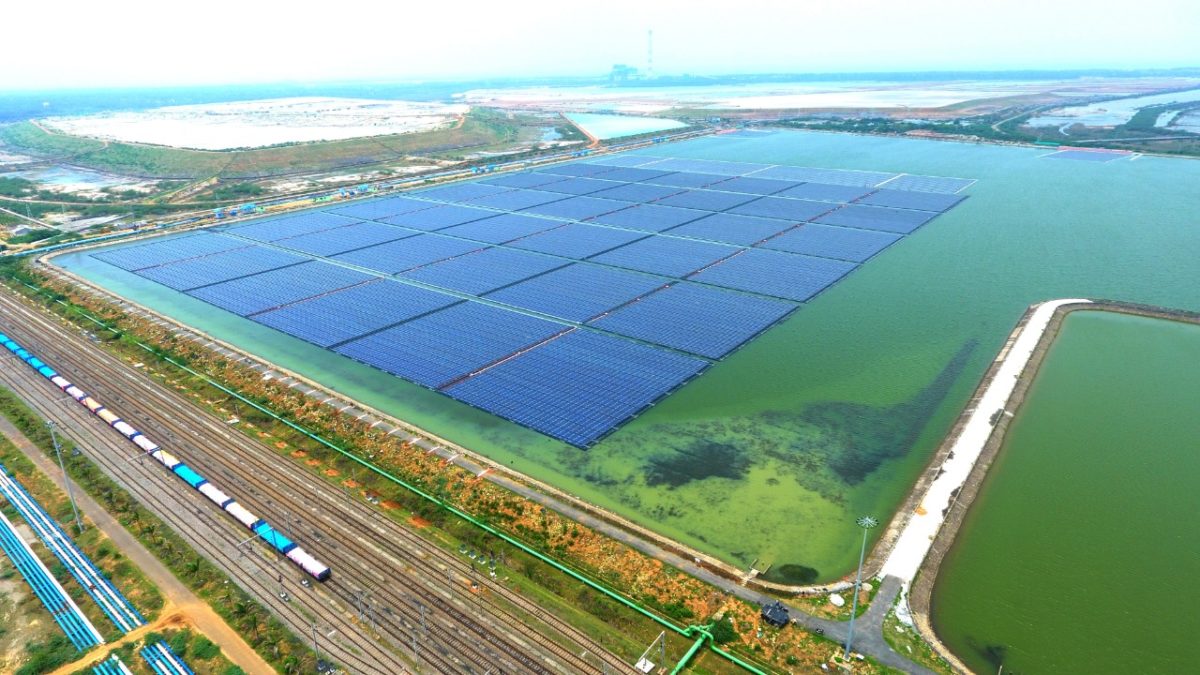At Ramagundam in the Peddapalli district of Telangana, the largest floating solar power plant in India is now fully operational. The National Thermal Power Corporation, the top public-sector power producer in the nation, ordered the 100 megawatt (MW) floating solar power photovoltaic project. The entire commercial operation of floating solar capacity in the southern area increased to 217 MW as of July 1 as a result of the commissioning of the facility, according to the NTPC.

According to a press statement, Bharat Heavy Electricals Limited, under an EPC (engineering, procurement and construction) contract, spent Rs 423 crore building the 100MW floating solar facility at Ramagundam, which is sprawled across 500 acres of the NTPC reservoir. The NTPC has set a goal of producing 60GW (gigawatts) of capacity using renewable energy sources by 2032, making up roughly 45% of its total power generation capacity after moving away from fossil fuels to hydro-, nuclear-, and renewable energy sources.
At Ramagundam, the solar panels are spread out across 500 acres atop floaters made of high-density polyethene material that remain afloat despite changes in water level. The spread is broken up into 40 blocks, each with a 2.5 MW capacity. A floating platform and an array of 11,200 solar modules make up each of these blocks. An inverter, a transformer, and a high-tension circuit breaker make up the floating platform.
The inverter, transformer, high-tension panel, supervisory control, and data gathering systems are all installed on floating ferro-cement platforms, making this project distinctive. According to the NTPC, the entire floating system is fastened to the concrete blocks that make up the dead weights (balanced reservoir bed) using specialised high-modulus polyethylene ropes. Through 33KV subterranean wires, the produced electricity is evacuated up to the existing switch yard.
Solar panels suspended over the water’s surface will slow evaporation, promoting water conservation. Also, unlike ground-mounted solar farms, which need enormous land surface areas, with a minimum land demand, existing space may be used more effectively for associated evacuation measures.
At Ramagundam, water evaporation may be reduced by around 32.5 lakh cubic metres annually. The water body underneath the solar panels assists in preserving their ambient temperature, enhancing their generation and efficiency. Similar to this, the NTPC claims that 1,65,000 tonnes of coal use and 2,10,000 tonnes of carbon dioxide emissions may be prevented annually.
The NTPC previously announced the commercial operation of a 92MW floating solar project at Kayamkulam in Kerala and a 25MW floating solar plant at Simhadri in Andhra Pradesh. The public-sector undertaking has so far only used around 500 acres of the stretch at its Ramagundam reservoir to produce 100 MW.
NTPC Ramagundam now also has a traditional ground-mounted solar farm that spans 50 acres along the national highway and produces 10 MW of electricity. An official claimed there was room for growth to produce a further 400 MW in the same reservoir despite the difficulty in obtaining land. The Telangana government is reportedly eager to boost sustainable energy by utilising floating solar farm technology at its several big reservoirs.











